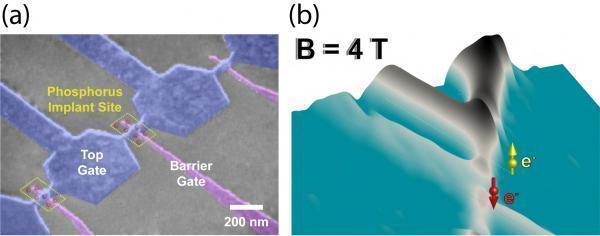Tiniest Transistor Ever Runs Electric Current through a Single Atom
A tiny working transistor provides a glimpse of the future in quantum computing

We may earn revenue from the products available on this page and participate in affiliate programs. Learn more ›
Ever-faster computers face a slowdown because of upcoming physical limits on the size of transistors, the small switches that control electronic processes. Now researchers have demonstrated the world’s tiniest transistor, which passes electric current through a single phosphorus atom — an achievement that goes beyond classical computing and hints at the future of quantum computing.
Scientists have already begun creating quantum processors that store information as qubits (quantum bits), which can represent both the 1 and 0 of binary computer language at the same time. The newly developed transistor provides not just an extreme example of transistor limits, but also points toward the development of qubits.
“In fact, our purpose was not to build the tiniest transistor for a classical computer, but a quantum bit which would be the heart of a quantum computer that is being developed worldwide,” said Mikko Mottonen, an applied physicist at the Helsinki University of Technology in Finland.
Mottonen worked with Finnish and Australian colleagues to experiment with the single phosphorus atom as an electron donor. The spin degree of freedom in an electron of the phosphorus could form the qubit “switch” that someday allows researchers to control quantum processes.
Classical computers won’t go by the wayside immediately. But we’re holding onto hopes of eventually seeing the world’s tiniest snowman perform a nanoscopic robo-jig on YouTube, thanks to its mini-transistors.
[via ScienceDaily]